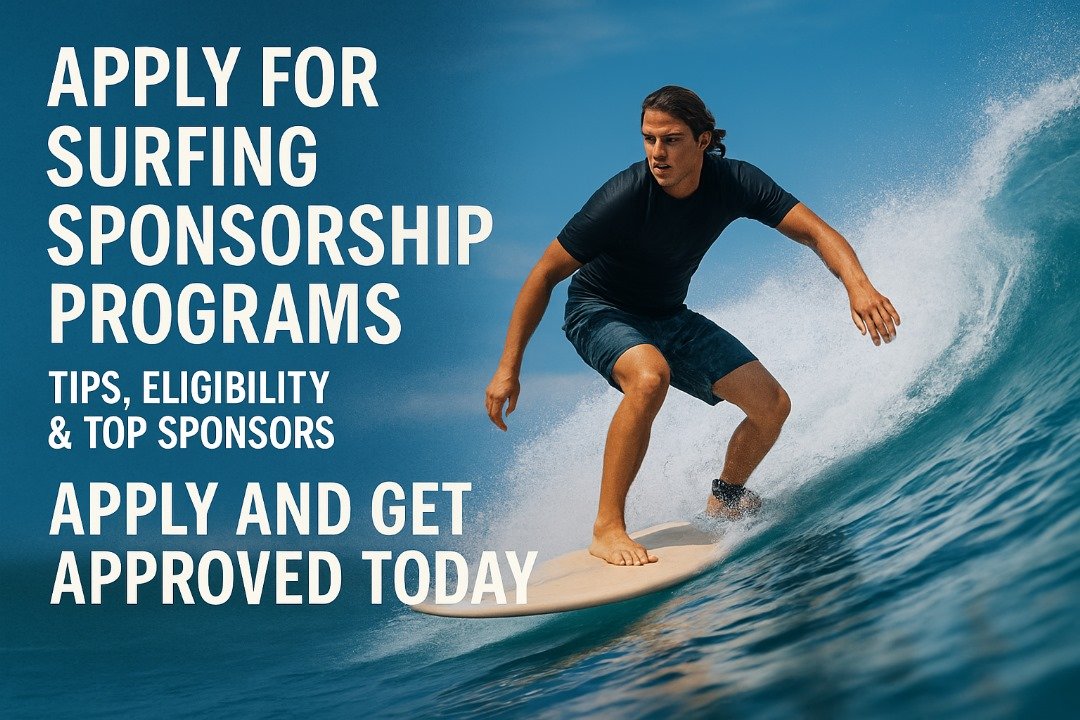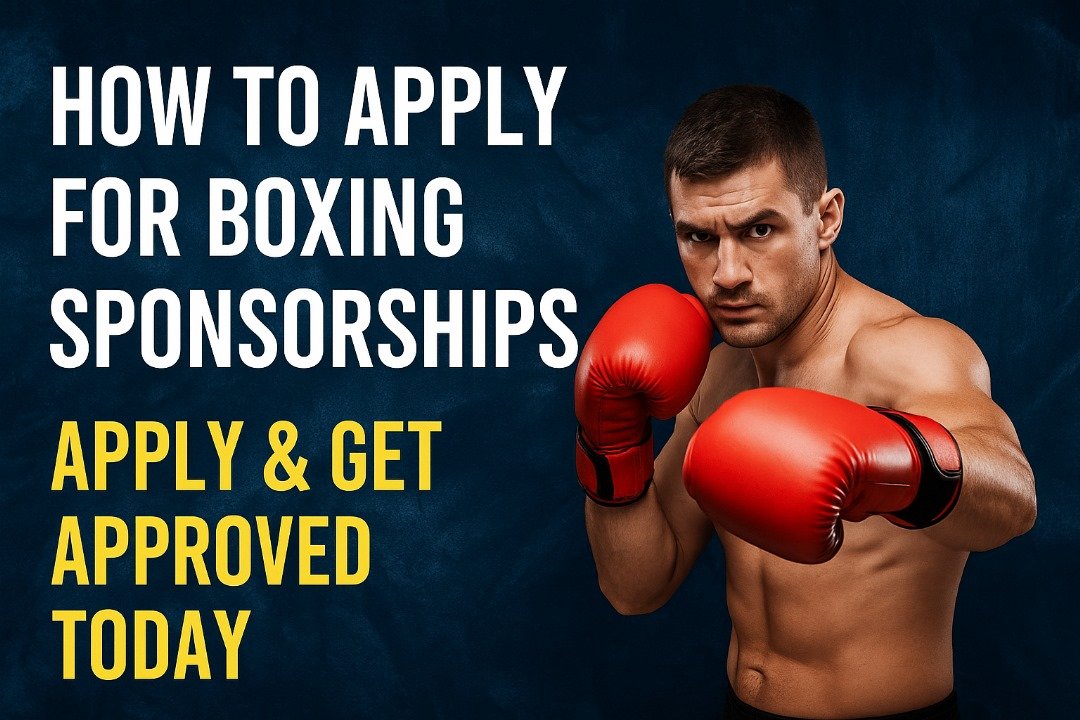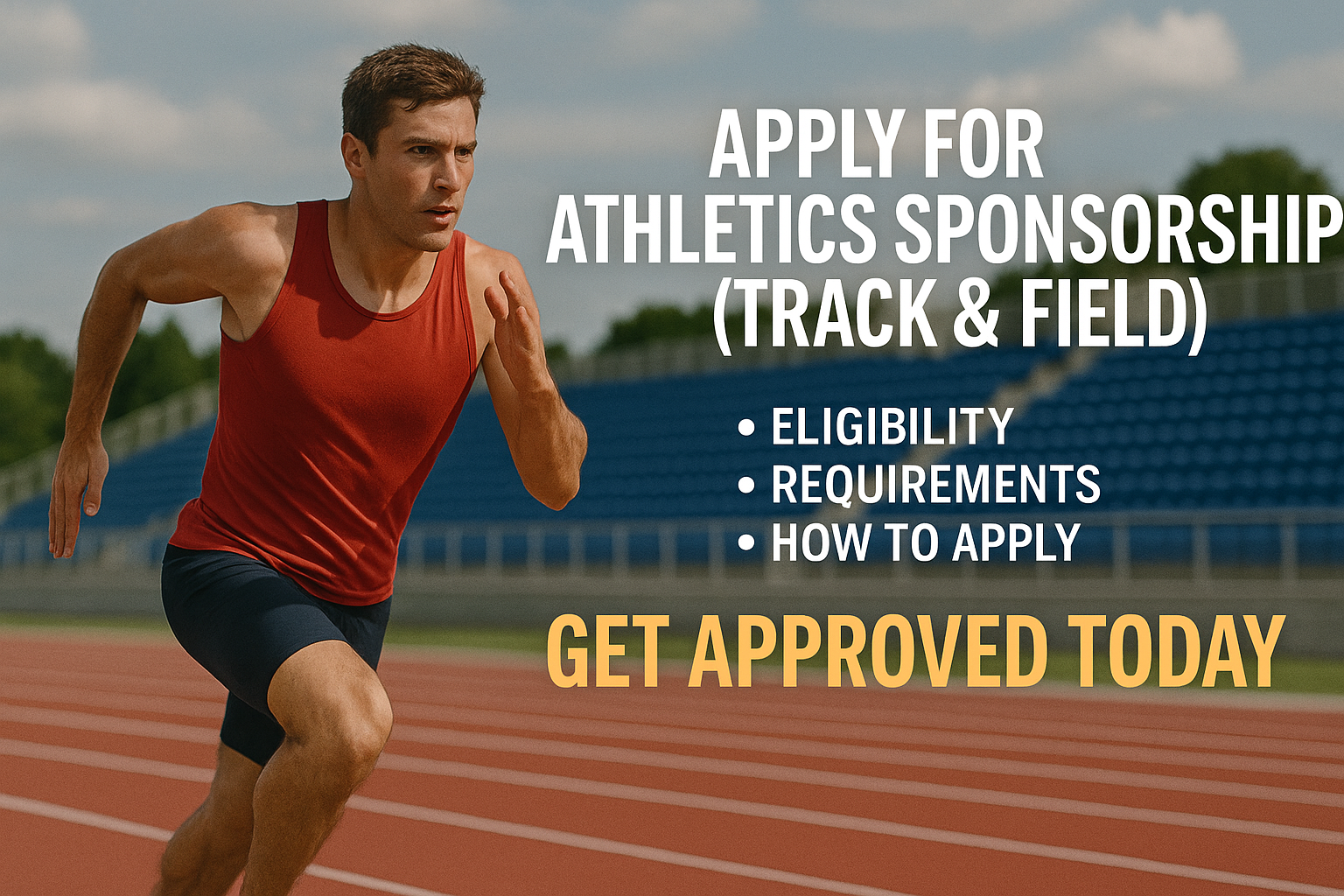Surfing has evolved from a lifestyle-driven, countercultural sport into a global phenomenon, complete with televised competitions, Olympic appearances, and brand partnerships worth millions. As the sport grows, so do the opportunities for talented surfers to pursue their dreams not just on the waves, but also through meaningful partnerships. That’s where Surfing Sponsorship Programs come into play. These programs bridge the gap between passion and profession, offering athletes the support they need to focus more on their performance and less on financial burdens.
In today’s surfing world, sponsorship is more than just free gear. Brands are investing in athletes who can represent their identity, grow their visibility, and connect with wider audiences. For surfers, this can mean travel stipends, custom boards, entry fees to international events, training resources, and of course, the ever-desirable recognition that comes from being part of a professional team. Whether you’re a junior just entering the competition scene or a seasoned rider looking to expand your career, understanding how Surfing Sponsorship Programs work is essential.
While the dream of being sponsored might seem reserved for top-tier athletes, the truth is there are opportunities for surfers at every level. Many brands now look beyond competition wins and evaluate potential ambassadors on lifestyle fit, content creation, local community involvement, and social media presence. This democratization of surf sponsorship means that more people than ever before can access the benefits—provided they know how to position themselves properly.
That’s exactly what this blog post is designed to help you with. From who is eligible to apply, to what top brands are looking for, we’re diving into every detail you need to know to secure a spot in a Surfing Sponsorship Program. You’ll also learn how to prepare your surf portfolio, approach brands professionally, and stand out in a sea of talented wave riders. We’ll even cover some of the most recognized names in surf sponsorship today and how you can align with their expectations.
Whether your goal is to land a gear deal, become a brand ambassador, or eventually turn pro, sponsorship can be a crucial stepping stone. It’s not just about catching waves—it’s about catching the eye of the right people at the right time. So, let’s start from the beginning and look at what makes a surfer eligible for sponsorship in the first place.
Eligibility
When it comes to Surfing Sponsorship Programs, eligibility isn’t always set in stone, but there are some key factors that most brands consider before signing a surfer to their team. First and foremost is your skill level and experience. While you don’t necessarily need to be on the World Surf League (WSL) tour to attract sponsors, a strong background in competitive surfing does help. Brands want to see that you’re serious about the sport this means consistent participation in regional, national, or international competitions and a record of high placements.
Beyond the competitive circuit, brands also consider your style, personality, and public appeal. Are you someone people look up to in the lineup? Do you stand out in the water with a unique approach to surfing? These factors, although subjective, play a significant role. Sponsorship isn’t just about talent—it’s also about relatability, presence, and the ability to represent a brand’s ethos. You don’t have to be the flashiest surfer, but you should have a defined surfing identity that makes you recognizable.
Another major criterion for eligibility is your social media presence. In today’s digital world, brands want visibility, and one of the easiest ways to measure that is through platforms like Instagram, TikTok, or YouTube. You don’t need hundreds of thousands of followers, but consistent posting, engagement with your audience, and a feed that aligns with surf culture can significantly increase your chances. Brands often value micro-influencers who have genuine, loyal followings over big accounts with low engagement. So if you’re active online and share your surfing lifestyle authentically, that’s a huge plus.
Some Surfing Sponsorship Programs are region-specific, which means eligibility can also depend on your location. For example, a brand running a local ambassador program in California might be looking for surfers who actively participate in the SoCal surf scene. This doesn’t mean you’re out of luck if you’re based elsewhere—but it does mean that doing a bit of research to find out what companies are active in your area can go a long way. Local surf shops, regional surfboard shapers, and community contests can be stepping stones to bigger opportunities.
Finally, it all comes down to brand alignment. Even the most talented surfers might not get picked up if their values don’t mesh with a sponsor’s. A company known for sustainability may prefer surfers who are vocal about ocean conservation. A youth-oriented brand might be more inclined to support younger athletes who engage with high school or college surf teams. Understanding a brand’s identity and ensuring you’re a cultural fit is just as important as shredding waves. Before applying, take the time to analyze what each sponsor stands for, and ask yourself: would I genuinely use their products and proudly represent them?
Top 10 Surfing Sponsorship Companies
When exploring Surfing Sponsorship Programs, it’s crucial to understand which companies are leading the way in athlete support. The top brands in surfing don’t just offer gear—they invest in surfers’ growth, help elevate their public image, and often open doors to international recognition. Whether you’re an aspiring grom or an underground charger, knowing who the key players are can help you tailor your sponsorship pitch and find the best match for your style and goals.
1. Rip Curl
One of the most iconic names in the surfing world, Rip Curl is renowned for nurturing young talent and investing heavily in grassroots development. Their “GromSearch” contest series has been a springboard for many surfers who’ve gone on to become world champions. Rip Curl’s Surfing Sponsorship Program focuses not just on competition results, but also on attitude, work ethic, and commitment to the sport. They’re looking for athletes who live the “Search” lifestyle—always chasing the next wave, the next challenge, and the next breakthrough moment.
2. Billabong
Billabong has long been a champion of both high-performance surfers and creative souls who embody the surf lifestyle. The brand frequently sponsors both contest surfers and free-surfers, offering a wide range of sponsorship opportunities. Their team includes legends and rising stars, and they’re known for producing beautifully cinematic surf films. If your vibe is about mixing performance with artistry, and if you love storytelling as much as barrel riding, Billabong might be your ideal sponsor.
3. Quiksilver
A cornerstone of surf culture since the ’70s, Quiksilver is synonymous with surf history and youth energy. Their sponsorship program is especially strong for junior surfers and those entering competitive circuits. Quiksilver also offers various tiers of sponsorship, including ambassador roles that don’t require elite-level competition wins. They value charisma and the ability to inspire others to get in the water. Being part of the Quiksilver team means carrying on a legacy—think of icons like Kelly Slater, who built their careers under this brand.
4. Volcom
If you’re someone who brings edge, style, and creativity to the surf scene, Volcom might be your brand. Their Surfing Sponsorship Programs are geared toward individuals who express themselves both in and out of the water. Volcom athletes are often known for pushing boundaries not just with tricks and maneuvers, but with art, fashion, and activism. The company actively supports surfers who challenge norms and represent the more alternative side of surf culture.
5. Red Bull
Red Bull is a standout not just for its energy drink empire, but for the massive backing it provides to elite athletes across all action sports. They don’t hand out sponsorships lightly, but when they do, it’s an all-in partnership. Red Bull sponsors only a select few surfers, but those chosen get access to advanced training facilities, high-level media production, and global exposure. Their team includes elite names like Carissa Moore and Mick Fanning. Red Bull is for surfers who are truly pushing the limits and making international headlines.
6. Oakley
Oakley, known for its performance eyewear, has extended its presence in surfing through both gear and athlete sponsorships. Their focus is on high-performance individuals who compete at a top level. Oakley offers sponsorships that combine functionality (like their sport-focused sunglasses and gear) with branding appeal. Their athletes often appear in major surf mags, campaigns, and global sporting events. If you align with a sleek, tech-driven brand image, Oakley could be a great match.
7. Hurley
Hurley’s sponsorship model has evolved over the years, now leaning heavily into lifestyle and community engagement. They support surfers who are not just competitive, but who are actively building their voice online and offline. Whether you’re filming surf edits, teaching kids how to ride waves, or making environmental change in your local lineup, Hurley is all about impact. They also run seasonal and regional programs that allow amateurs to enter the surf scene through ambassador-style roles.
8. O’Neill
With roots dating back to the wetsuit revolution, O’Neill has always been a brand that supports progression and ocean awareness. Their Surfing Sponsorship Program includes not only athletes but also ocean advocates. They often work with surfers who are involved in marine conservation or community surf outreach programs. O’Neill is ideal for eco-conscious surfers who see the ocean as more than just a playground, but as something to protect and preserve.
9. Vans
Vans is more than a skate brand it’s deeply embedded in surf culture, particularly through its support of grassroots events like the Vans Triple Crown of Surfing. Their sponsorships tend to favor young, progressive riders who are involved in their communities or who bring artistic flair to their surfing. Vans is not always about contests, it’s about culture, connection, and creativity. They support a range of talent, from pros to regional influencers and artists who surf.
10. Monster Energy
Monster Energy has made its mark by sponsoring some of the most fearless athletes in action sports, including surfing. Their brand identity is bold, aggressive, and full of adrenaline—perfect for surfers who charge heavy waves and bring a no-holds-barred attitude to the sport. If you have a strong personality, a big online presence, and a performance-heavy surf style, Monster’s Surfing Sponsorship Program might be worth aiming for.
Requirements for Surfing Sponsorship
Securing a spot in one of the many Surfing Sponsorship Programs out there isn’t just about catching big waves or having a few cool photos on Instagram. Sponsorship is a professional relationship between you and a brand, and just like with any professional opportunity, there are specific requirements you need to meet to be seriously considered. These expectations vary from one company to another, but some core essentials show up across the board. Meeting (and exceeding) these can be the difference between staying unseen and landing that dream partnership.
The first and arguably most important element is your surf resume. Think of this like a traditional CV but tailored for your surfing career. It should include the competitions you’ve entered, your rankings, notable accomplishments, surf spots you frequent, and even a short biography that captures who you are as a surfer. This isn’t the place to be shy highlight your wins, your dedication, and your future goals. If you’re not a competitive surfer, that’s okay too—just emphasize your experience, travels, mentorships, and contributions to the surf community. If you’ve been featured in any local media or surf publications, definitely mention that.
Next up, you’ll need a media kit. Brands today are looking for athletes who can also be content creators, and your media kit is your visual resume. It should include high-quality action shots, lifestyle photos, video clips (surf edits, event highlights, or social media reels), as well as social media statistics. Engagement rates, follower demographics, and growth trends are all helpful here. The goal is to show potential sponsors what kind of exposure you can offer. Remember, it’s not just about numbers—it’s about the quality of your audience and the authenticity of your connection with them.
Professionalism is another key requirement that often gets overlooked. While surfing has always been known for its laid-back culture, when it comes to Surfing Sponsorship Programs, professionalism is non-negotiable. This means replying to emails promptly, being respectful and articulate in your communications, showing up on time to events, and following through on commitments. Brands are more likely to invest in surfers who treat the sponsorship like a serious opportunity and represent the company with integrity, both online and off. Sponsors want reliable ambassadors, not just flashy talents.
Another important factor is consistency. Sponsors want to see that you’re not just a seasonal surfer or someone who’s posting sporadically online. They look for athletes who are consistently active—whether that’s competing regularly, creating weekly content, or participating in community events. Consistency shows that you’re dedicated, disciplined, and genuinely passionate about surfing. If you go quiet for months at a time or only engage during big events, it can be a red flag. Even during your off-season, you can stay active through training videos, gear reviews, surf travel stories, or behind-the-scenes insights into your life as a surfer.
Finally, more and more Surfing Sponsorship Programs are placing value on community involvement and personal values. Brands want ambassadors who care about something more than just their own progress—they want people who uplift others, promote environmental stewardship, or give back to the sport. If you’ve taught at local surf camps, led beach clean-ups, or mentored young surfers, include that in your proposal. These contributions not only help differentiate you from others but also align with the growing emphasis on corporate social responsibility in the surf industry.
Application Process
Once you’ve checked off all the boxes—your surf resume is polished, your media kit is compelling, and you’ve done your research on the brands you align with—it’s time to take the leap and apply. The application process for Surfing Sponsorship Programs can feel a bit intimidating at first, but with the right approach, it becomes a strategic and even empowering step in your surfing journey. Think of it not just as asking for support, but as presenting a business partnership: you’re showing a brand why investing in you is a win for both sides.
The very first step is to research the brand thoroughly. Before you even think about hitting “send” on a proposal, you need to understand what the brand stands for. Who are they sponsoring already? What’s their message? Do they value sustainability, youth culture, cutting-edge performance, or community outreach? Look at their social media, their website, their sponsored athletes, and their marketing campaigns. The more you know about a brand, the more effectively you can tailor your pitch to them. A generic sponsorship request won’t stand out. A custom, thoughtful message will.
With your research in hand, you’ll need to put together a killer portfolio. This includes your surf resume, media kit, and a short but impactful sponsorship proposal letter. Your letter should be personal, clear, and confident. Start by introducing yourself and your background in surfing—make it authentic and relatable. Then transition into why you’re interested in that specific brand: what draws you to their products or values? Finally, highlight what you bring to the table. This isn’t just about asking for free gear; it’s about showing the brand what kind of exposure, representation, and energy you can provide in return.
Your proposal should answer three core questions:
1. Who are you? (Your background, story, personality, and goals)
2. Why them? (What about the brand aligns with you personally and professionally)
3. What can you offer? (Your audience reach, content value, contest presence, community impact, etc.)
Once your materials are ready, it’s time to reach out professionally. Depending on the company, this might be through an official sponsorship application portal, a brand ambassador sign-up page, or a direct email to the sponsorship or marketing team. Some brands even accept DMs through Instagram, though it’s best to go through official channels whenever possible. Keep your message respectful, concise, and enthusiastic. If you’re sending an email, make sure the subject line is clear for example, “Sponsorship Proposal: [Your Name] Surfer & Content Creator.”
After you’ve sent your proposal, give it a week or two before following up. A gentle check-in is perfectly acceptable and shows you’re serious. Something like, “Hi [Name], I just wanted to follow up on my sponsorship proposal and see if you had a chance to review it. I’d love to connect and discuss how I can be a part of your team!” is professional without being pushy. Keep in mind, not all brands will respond some may have limited spots, and some may be in between campaigns. Don’t take silence personally. Stay focused, continue building your presence, and keep refining your approach for the next opportunity.
The application process for Surfing Sponsorship Programs isn’t a one-time effort it’s an ongoing journey of growth, connection, and perseverance. Whether you hear back from your dream brand or not, every time you put yourself out there, you gain experience, improve your materials, and get closer to that “yes.” Keep surfing, keep posting, keep showing up and the right opportunity will find you when the time’s right.
CONTINUE READING: [Apply for Diving Sponsorship Programs]
Conclusion
The path to joining a Surfing Sponsorship Program may seem daunting at first, but as we’ve explored throughout this guide, it’s far more accessible than many surfers realize. It’s not reserved only for world champions or viral influencers it’s an opportunity for anyone willing to put in the effort, show up with consistency, and align themselves with a brand’s mission. Sponsorship is no longer just about winning competitions; it’s about building meaningful relationships with companies who believe in your journey, your message, and your potential.
From understanding eligibility to building a strong surf resume and creating a compelling media kit, every step is about presenting yourself as both an athlete and a brand partner. If you want a company to invest in you, you need to show that you’re investing in yourself. This means curating your content, staying involved in the surf community, and being thoughtful about how you represent both your personal values and the image of any brand you work with. Sponsors want ambassadors, not just athletes they’re looking for people who live and breathe surf culture and can authentically bring their brand to life.
We’ve also discussed the top ten companies that lead the way in surf sponsorship brands like Rip Curl, Billabong, Red Bull, and Hurley, all of which offer unique programs tailored to different personalities and skill levels. Some focus on elite performance, while others prioritize community engagement, lifestyle content, or even environmental advocacy. This variety means that there is no one-size-fits-all path to sponsorship. It’s about finding the right fit and making your application stand out based on how well your values and content align with theirs.
The application process itself, while professional, doesn’t need to be overwhelming. With research, a well-crafted proposal, and a respectful approach, you can put yourself in front of the right people. And if one opportunity doesn’t pan out, use it as motivation to improve your pitch and keep building your surf brand. The more you invest in your growth, the more likely it is that sponsors will take notice. Think of each application not as a shot in the dark, but as a step forward in your career—each email you send and every video you edit is part of the bigger picture.
Ultimately, Surfing Sponsorship Programs offer more than just gear and funding they offer partnership, exposure, and a platform to share your love of surfing with a wider audience. They’re about growth, both personal and professional. So don’t wait until you think you’re “good enough” start now. Build your portfolio, tell your story, and be proud of where you are in your surf journey. Brands aren’t just looking for the best surfers they’re looking for the most passionate, authentic, and driven. And if that’s you, then it’s only a matter of time before the right sponsor finds you. OFFICIAL LINK
FAQs
FAQ 1: What makes a surfer stand out to potential sponsors beyond just skill?
While raw talent and competitive performance are undeniably important, what truly makes a surfer stand out to brands today goes far beyond what happens in the water. Sponsors are not just looking for someone who can land massive airs or win contests they’re looking for a complete package. That means personality, story, consistency, and influence.
Think of yourself as a brand. What makes your style different? Do you have a unique backstory? Are you actively engaging with your followers on social media? Are you creating compelling content that showcases not just your surfing, but your lifestyle, your travels, your challenges, and your triumphs? All of these things help sponsors connect with you on a human level.
Sponsors also want to know that you’re a professional off the waves. This means being dependable, easy to communicate with, and ready to represent the brand in a positive way. Being active in your local surf community, mentoring younger surfers, or participating in ocean cleanups are all bonus points. These actions show that you’re not just riding waves you’re building a meaningful presence in surf culture.
Ultimately, you need to answer this question for brands: “Why you?” If you can tell your story authentically, back it up with action, and maintain a visible, consistent presence online and in your community, you’ll be far more appealing to sponsors than just being another great surfer.
FAQ 2: How much can I realistically expect to earn from a surfing sponsorship?
Great question and one that most surfers wonder about! The financial side of Surfing Sponsorship Programs can vary drastically depending on your experience, exposure, and the brand you’re partnering with. It’s important to know that not all sponsorships are created equal. While some elite athletes can land six-figure deals, most entry-level or grassroots sponsorships start small but they come with big potential.
For up-and-coming surfers, the most common form of sponsorship includes free gear think wetsuits, boards, apparel, accessories, and sometimes travel stipends or event fees. These can save you thousands of dollars a year, which is a major benefit in itself. Some brands might also offer monthly allowances or performance-based bonuses (for instance, getting a cash reward if you place in a major competition or produce viral content).
Once you start gaining momentum like increasing your following, improving your rankings, or producing high-quality branded content you could begin negotiating actual payments. This could come in the form of monthly retainers, one-off marketing campaigns, or appearance fees.
The real goldmine, however, lies in long-term relationships with brands. If you’re consistent, creative, and represent their values well, they may invest more into you over time, including travel opportunities, sponsored film projects, or paid ambassadorship roles.
Bottom line: focus on value first—what can you offer them? Start with gear, build trust, and grow your worth. The money will follow when you’ve proven yourself as both a great surfer and a valuable partner.
FAQ 3: Can I get sponsored even if I’m not competing professionally?
Yes, absolutely and that’s one of the most exciting evolutions in the world of Surfing Sponsorship Programs. While competition results were once the main ticket to sponsorship, the modern landscape has expanded to include lifestyle surfers, content creators, community leaders, and even passionate beginners with a strong personal brand.
Brands today are deeply interested in authenticity and relatability. They want surfers who are creating genuine connections with their audiences and who are active in the culture, even if they aren’t winning trophies. If you’re someone who shares inspiring surf content, educates others, reviews gear, or documents your surf journey in an engaging way you’re already building a case for sponsorship.
In fact, many companies now run ambassador programs specifically for non-competitive surfers. These programs often prioritize regional presence, social engagement, and brand alignment over podium finishes. You might be featured in brand campaigns, receive early product releases, or be invited to local events—all without ever entering a heat.
It all comes down to value. If you can promote a brand with passion, integrity, and reach the people they want to reach, you’re sponsor-worthy. So don’t count yourself out if contests aren’t your thing. Focus on building a strong voice, curating your image, and showing the world your love for surfing. That alone can open the sponsorship doors wide.
FAQ 4: How early is too early to start applying for sponsorships?
If you’re wondering whether you’re “too young” or “not experienced enough” to pursue sponsorship, the short answer is it’s never too early to start. Many brands love supporting up-and-coming talent, especially if you show promise, passion, and professionalism. In fact, some of the world’s top surfers were first spotted and signed as pre-teens through junior programs or local surf shop partnerships.
What matters more than your age or competition level is your approach. Even if you’re early in your surf journey, showing brands that you’re serious, coachable, consistent, and aligned with their values can go a long way. This could mean reaching out to local brands, applying to youth development programs, or simply tagging them in high-quality content on social media.
The earlier you start, the more time you have to build relationships and grow with a brand. Some companies love having long-term athletes who represent their brand through different stages of life—junior competitions, high school surf leagues, college surf clubs, and even into the pro realm.
Just be realistic. Don’t jump straight into the inbox of a global brand asking for money and boards. Start small, build credibility, and grow naturally. Whether you’re 12, 16, or in your early 20s, your journey is valid—and brands are watching. If you’re dedicated, driven, and authentic, it’s never too soon to show the surf world who you are.
FAQ 5: What should I avoid when trying to get a surfing sponsorship?
Great surfers can still miss out on amazing Surfing Sponsorship Program opportunities if they make avoidable mistakes and some of these slip-ups are more common than you might think. If you’re serious about landing sponsorship, knowing what not to do is just as important as what you should be doing.
One of the biggest mistakes is sending generic, copy-paste emails to multiple brands. Sponsorship teams can spot insincerity from a mile away. If your message doesn’t mention the brand’s values, athletes, or explain why you genuinely want to work with them, it’s likely going straight to the trash. Always personalize your approach.
Another common issue is neglecting your social media presence. If your feed is inactive, inconsistent, or filled with unrelated content, it doesn’t matter how good your surf skills are—brands want to see engagement and branding potential. Make sure your online image reflects who you are as a surfer and an individual.
Also, avoid overpromising and underdelivering. Be honest about what you can offer, and never exaggerate your stats or experience. Brands appreciate transparency and consistency more than inflated numbers.
Lastly, don’t get discouraged by rejection. Sponsorship is competitive, and even the best surfers get turned down. What matters is how you respond: learn, improve, and try again. The worst thing you can do is stop putting yourself out there.
Approach every opportunity with humility, professionalism, and passion—and you’ll avoid the common pitfalls that trip up so many others chasing that first (or next) sponsor.






One thought on “Apply for Surfing Sponsorship Programs – Tips, Eligibility & Top Sponsors”